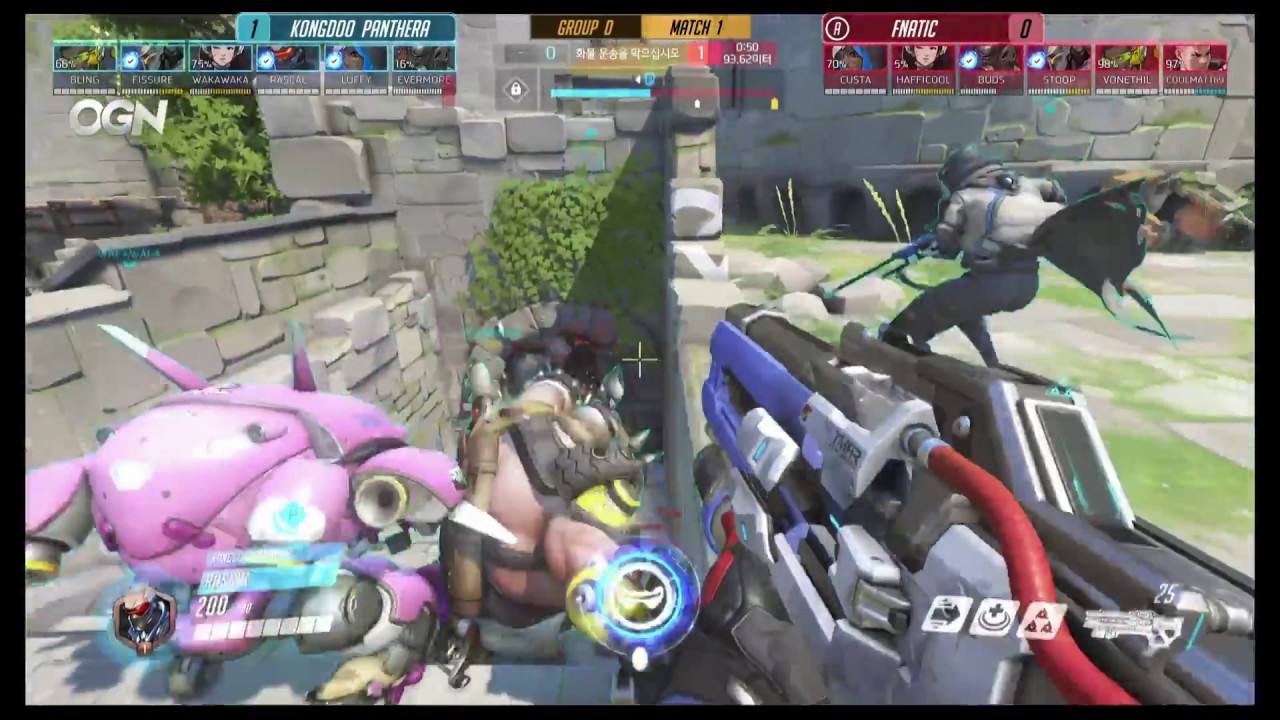Known as esports, competitive games are hardly new. Their history goes back all the way to the very beginning of video games, in the smoke-filled arcades of the ’70s and ’80s, where crowds placed bets on the best local players. As the game industry matured, so did its competitive side. In the late ’90s, leagues and tournaments formed around first-person shooters like Quake and Unreal, and people were winning real money and gaining real fame. Those early years were marked by a certain type of fragility, not much different from the formative years of any sport, from baseball to arena football. Leagues arose, then folded, then were replaced by others, which in turn folded. Television channels would awkwardly flirt with industry broadcasts, only to give up amidst poor ratings. Over the past half-decade, however, the industry has undergone something of a renaissance. Viewership is skyrocketing—with more than 14.7 million people, for instance, tuning in at most to the 2016 League of Legends World Championship final. More and more players are flocking to the games, too; League of Legends, easily the most popular esport, boasts more than 30 million players every month. And everyone from advertisers to venture capitalists are dumping millions into the industry. Meanwhile, thanks to advances in video-streaming technology and Internet broadband, esports are more accessible than ever before. It’s a great time to get involved. But to outsiders eager to give esports a try, or even casual gamers, the industry presents a daunting facade. For most games, there’s no single league, like the NFL in football or the MLB in baseball, that encapsulates the vast majority of active players and games. There’s no ESPN or the equivalent to Monday Night Football every week, providing fans a one-stop shop, a guarantee of time and channel to watch top teams perform. On top of that, esports is a genre unto itself; there are as many varieties of esports as there are traditional sports. Instead, esports matches are taking place all the time, streamed straight from a gaming star’s home PC. There are also year-round tournaments run by a variety of organizations all over the globe. These, while numerous, aren’t usually unified in any kind of formal structure. But underneath that beguiling facade is a charming simplicity: The fact is, once you’ve found the game to follow, you’ll never have a problem finding a match. You just need to know where to look. So let’s begin there: Which game is worth your time? Essentially, any game that can be played competitively has the potential to be an esport. Below, we provide a quick introduction to each, as well as a few clips of representative tournament play.
The games
League of Legends
Competitive League of Legends is played between two opposing five-men teams whose objectives are to destroy their opponents’ main base, known as a Nexus, while defending their own. To win, they have to fight their way across a map littered with enemy players, turrets, and waves of computer-controlled minions. The battlefield is broken up into three distinct lanes through which the waves travel, and a neutral area between lanes that is called the jungle. Players pick unique champions at the beginning of the game, and can increase the strength of their chosen champion by selecting abilities as they gain experience and level up, and by purchasing items with gold earned by killing enemy players, minions, or buildings. With five players and three lanes, there is always an imbalance of power across the map, and strategies often revolve around abusing that imbalance with high mobility and area control. Games typically last 20 to 40 minutes.

Dota 2
The original Dota game pretty much invented the multiplayer online battle arena genre, and its widespread indie popularity helped push the Valve-made Dota 2 to stratospheric heights, where it now rests right behind League of Legends on the MOBA totem pole. As the progenitor of the MOBA game, Dota 2’s gameplay functions much like that of League of Legends, featuring teams of five that battles each other across a fantastical battlefield, likewise divided by three main lanes. Along the way, they battle defensive towers and computer-controlled minions, collecting experience and money that they can use to level-up and buy items. The goal is to eventually destroy the opponent’s base, or “ancient.” Dota 2 stands out thanks to some of the most complicated mechanics of any video game today, including a courier that ferries items between players and the store, complex jungle mechanics like “stacking,” and the unique “denying” feature, in which you can kill your own minions, towers, and heroes to deny your opponent gold and experience. Each game takes, on average, 25-45 minutes.

Counter-Strike: Global Offensive
The latest iteration of the classic Counter-Strike franchise may have some unique quirks, but it is still quite reminiscent of its previous version. Built around the game mode “Detonation,” two teams inhabit the different role of Terrorists and Counter-Terrorists. Competing on unique maps that promote different styles of play, each map is played as a best-of-30, with each round concluding if all players on either side are killed within a 115 second time-limit or if the Terrorists succeed in detonating the bomb. As each weapon has a unique set of damage and accuracy, the game is very individually demanding. Players also earn money for each won round and bomb detonation/defuse, as well as killing opponents—which allows the players to purchase better weapons and equipment at the start of a round. Maps usually take between 20 to 30 minutes.

Overwatch
/http://cdn0.dailydot.com/uploaded/images/original/2013/12/12/DOTA_FINAL_NOMORE.png) Blizzard’s most recent IP has become something of a phenomenon both inside and outside of competitive gaming. Overwatch is a team-based shooter similar to Valve’s Team Fortress 2. Featuring a total of 25 heroes, each character is part of a specific role, which allows specific team compositions to be constructed in competitive matches. The four roles are: Offense, Defense, Tank, and Support. Overwatch features teams of six who have to use their hero’s abilities to the fullest as they attempt to secure victory in a variety of game-modes. The most popular modes of play are called Control, Assault, Escort, and Payload, which all feature a unique objective each team will have to accomplish. Control is reminiscent of a standard capture the flag-scenario, while Escort sees one team has to clear the path for a payload through three separate checkpoints. Maps usually take between 20 to 30 minutes.
Blizzard’s most recent IP has become something of a phenomenon both inside and outside of competitive gaming. Overwatch is a team-based shooter similar to Valve’s Team Fortress 2. Featuring a total of 25 heroes, each character is part of a specific role, which allows specific team compositions to be constructed in competitive matches. The four roles are: Offense, Defense, Tank, and Support. Overwatch features teams of six who have to use their hero’s abilities to the fullest as they attempt to secure victory in a variety of game-modes. The most popular modes of play are called Control, Assault, Escort, and Payload, which all feature a unique objective each team will have to accomplish. Control is reminiscent of a standard capture the flag-scenario, while Escort sees one team has to clear the path for a payload through three separate checkpoints. Maps usually take between 20 to 30 minutes.

There are plenty of other esports that don’t quite reach the stratospheric popularity of the big three. But they’re equally fun and worth your time. Take, for instance, Super Smash Bros, the wildly popular Nintendo brawler, subject to one of the best video game documentaries ever made and a cult hit in the esports scene. Related: The Top Eight Esports Documentaries of all Time Along those lines, Street Fighter experienced a revival with the release of Street Fighter 4 in 2008, and now enjoys a huge, and passionate fan base—it also represents the continuation of an honored esports tradition. Back in the ’90s, Street Fighter 2 was one of the first games to attract an international audience of competitive players. If brawlers aren’t your thing, you can try first-person shooters like, say, the popular console series Call of Duty or Halo. And then, of course, there are the indies, games made by small teams of hardcore enthusiasts that attract a cult following.
Where to watch
There are actually competitive games all the time going on in esports, and you can pretty much watch any one of these that you want. That’s thanks to Twitch, the online streaming company that dominates video game streaming. With Twitch anyone—from a drunk guy playing Halo in his basement to the top esports players in the world—can broadcast their games to anyone else, at any time. The site’s a breeze to navigate, as its main categorization scheme centers on games themselves. Want to watch a League of Legends match? Just click on the giant League of Legends image on the home screen, which will load up a selection of games sorted by popularity.

Once you’re invested enough in esports that you begin rooting for specific players or teams, you can also follow their channels directly on Twitch. The site may be the largest player in the streaming game, but it’s not the only one. You can also catch streams on YouTube as well as a handful of other sites.
The tournaments
The lifeblood of esports are the causal streams that you find on Twitch and its competitors. Watching these matches is, however, akin to watching a pick-up basketball game between a couple of NBA stars. So to a certain extent, this type of game lacks the heart-thumping excitement of truly competitive play, where real money is on the line and real reputations are at stake. The best place to catch that kind of action is at professional tournaments, which are scheduled throughout the year and are run by a variety of groups, from the game developers themselves to independent organizers. The best way to think of an esports season is to compare it to golf or tennis, where top players or teams move from one event to the other, over the course of a year. In esports, the closest parallel to these traditional sports leagues is the League of Legends Championship Series, an annual competition where teams play every week, culminating in a final tournament near the end of August. This format will also be expanded upon in Blizzard’s upcoming Overwatch League, which will be the first league to test the traditional sports formula of geo-localized franchises representing key cities across the world. For most games, however, there’s no overarching league keeping track of a player’s progress. Instead, at the end of every year, the best metric for determining a team or player’s success is simply their prize totals, which are dutifully recorded at the site EsportsEarnings. In Korea, where esports has been a mainstream passion for over a decade, the country’s richest corporations line up to advertise at events that can attract more than 100,000 fans. Ongamenet, a Korean cable TV channel, has broadcast the highest level esports in the world since 2000. Korea’s present is the rest of the world’s future. The industry may be young, it may be fragile and not always easy to map out, but it’s also always proven resilient. As the Internet and video games become even more enmeshed in our lives, esports will only grow. What we’ve provided here is just the slimmest of windows through which to catch a glimpse of esports. There’s a whole, immensely entertaining universe out there. Why not go exploring?






Published: Sep 5, 2017 10:10 am